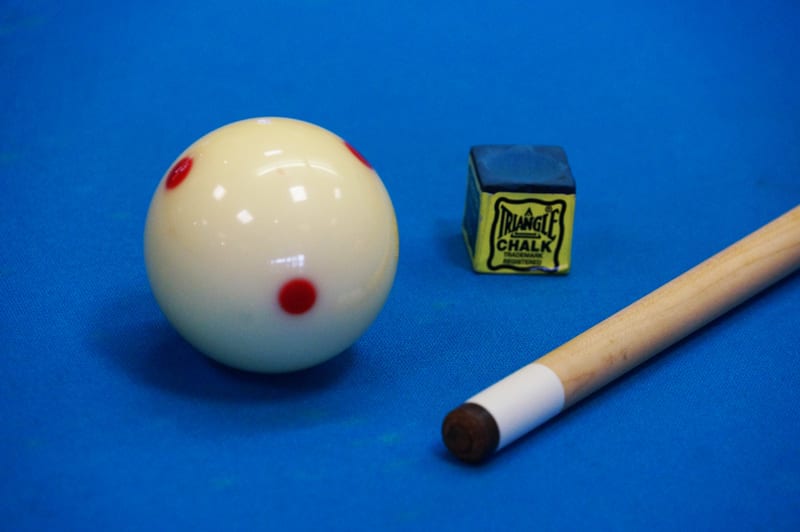With so many different cue specifications to choose from, the inevitable question that comes up (especially if you’re looking to purchase your first cue) is “Can I use any cue for any table sport?”, With so many different games, can one size fit all?
We have covered the technical differences in detail on our guide to pool cues, but this guide will go more into detail on what using different cues for various cue sports can mean for players.
American Cues

American cues are easily recognisable from the special tips which have a large 11mm diameter tip. The very end is made from leather to give additional control and grip when the cue ball is struck, ensuring as much energy from the player’s cue action is transferred to the cue ball as possible.
The long white ferrule (typically made from plastic) gives the cue some shock absorbing characteristics, which is useful when striking the much heavier 2 1/4” American cue balls.
Using an American Cue for English Pool
For general play, a player would struggle using an American pool cue due to the difficulty in precise ball control. The cue tip is so large compared to the English cue ball that striking a specific point on it accurately is very difficult.
However, American cues are occasionally used exclusively on the break in English pool. The large cut tip makes delivering a powerful strike on the cue ball very easy, and it results in a powerful (although sometimes difficult to aim effectively) opening shot.
This lack of aiming control also makes using an American cue ill advised if you want the most precision possible whilst playing Snooker.
Snooker Cues and English Pool Cues
A Snooker and English Pool cue share many physical characteristics. In fact, on the surface many wonder if there's any difference between them at all. The key difference between them becomes apparent when looking at the finer details between them. Both cues are made from Ash timber, giving them their noticeable grain. However, the difference lies in the tip size, and the ferrule's material.
On an English Pool cue, the ferrule is normally brass with a 8-9mm coarse leather tip for precision when making shots. A snooker cue has a tip that's a smigeon larger at 9-10mm with the same coarse leather for control and precision, and uses a ferrule of steel for additional strength - Ideal for striking the slightly larger 2 1/16" Snooker cue ball.
Using Snooker or English Pool Cues For Other Games
With the differences between English Pool and Snooker cues being so slight, you may be wondering why the two types exist at all, and if you really need two different types to play the two different games. The good news is that to the casual player, the difference between the two really isn't that noticeable. So if you're only casually enjoying English pool whilst focussing on your Snooker game, feel free to play English pool with a Snooker cue. There are marginal caveats to using a Snooker cue to play English pool - Namely a very slight loss of precision over shooting where an English Pool Cue would deliver.
English cues however are a little less versatile in their use. With their different ferrules and smaller cue tips, consistently playing with a larger Snooker ball can lead to something known as 'mushrooming' of the tip. Mushrooming refers to the effect of compression to the cue tip over time, which causes the tip of a cue to flatten until the edge bulges over the original edge of the tip, resulting in reduced grip when striking the cue ball.
Using a Snooker or English Pool Cue for American Pool
If using an Englsh pool or Snooker cue for American pool, you will notice a definite decline in your quality of play. Whilst English pool and Snooker cues offer more in the way of control and precision, they are not cut out to the vastly increased weight and forces experienced when playing with the larger and heavier 2 1/4" cue balls used in American pool.
Many players comment that the shots in American pool lose their feel when using one of these cues due to the shocks and impacts involved. This will lead to mushrooming as mentioned earlier, and in extreme cases (especially when breaking) potentially splitting of the cue itself.
Conclusion
Cues can feel a little confusing when their anatomy can feel so different from game to game (or in some cases not different enough). Whilst we would recommend playing each game with their respective type of cue, there can be some exceptions as we have detailed above. We have a huge amount of cues to hand in our showrooms of all different types, where you will be able to feel the difference yourself or ask any questions you may have.
If you want to ask us anything else, drop us a question in live chat, or contact us on 0800 622 6464.
